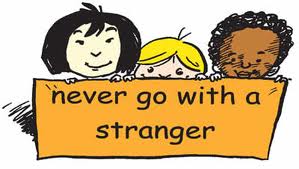A few months ago, when I was at the movie theater with friends, I saw the trailer promo for Kevin James’ new film “Here Comes the Boom“. While I haven’t seen the movie yet, I can honestly say that the promo reached out of the silver screen, grabbed me by my fundraising collar and shook me hard. The first time I saw it, my immediate first thought was “OMG . . . I bet this is exactly what most volunteers conjure up in their mind when I ask them to help me fundraise for a good cause.”
Click here to see that short promotion:
[youtube=http://www.youtube.com/watch?v=byJLTgPLDT4]
If you didn’t pick it up from the video clip, here is how the film is described by its PR people:
“When cutbacks threaten to cancel the music program and lay off its teacher (Henry Winkler,) Scott begins to raise money by moonlighting as a mixed martial arts fighter. Everyone thinks Scott (Kevin James) is crazy — most of all the school nurse, Bella (Salma Hayek) — but in his quest, Scott gains something he never expected as he becomes a sensation that rallies the entire school.”
If I could re-write this description, it would sound something like this: “When cutbacks threaten to cancel the music program, supporters think of all kinds of crazy fundraising ideas first (ranging from cage fighting to bake sales) rather than the most obvious solution — flat-out asking their friends and fellow music program supporters to write a check.”
 Isn’t this the simple truth, too? It always surprises me that people will grasp at every other straw first during times of cutbacks almost as if they are saying: “I’ll do anything, but please don’t ask me to ask other people for a contribution to support something I know they want to support.”
Isn’t this the simple truth, too? It always surprises me that people will grasp at every other straw first during times of cutbacks almost as if they are saying: “I’ll do anything, but please don’t ask me to ask other people for a contribution to support something I know they want to support.”
Additionally, this movie trailer has me convinced that when many of us ask friends to join the annual campaign team to work a few pledge cards, their brain immediately pictures a cage match with them and a prospective donor gripped in a grudge match.
With annual campaign season right around the corner, I suspect many of us are starting to assemble our prospect lists of potential campaign volunteers. Kevin James’ movie provides me with a gentle reminder that volunteers have all sorts of stereotypes in their heads about fundraising, and it is my job to over come those obstacles.
The following are a few simple suggestions and best practices that can help you change the picture in your prospective campaign volunteer’s head on your next recruitment visit:
Setting expectations
Clarity is very important when recruiting volunteers for your annual campaign. Keep in mind that people don’t process as much through their ears as they do through their eyes. With this in mind, bring a written volunteer job description with you to the recruitment meeting. Explain verbally what you need them to do, and then leave the written volunteer description with them.
Providing something in writing does a few things:
- It gives them more information to process and reinforces everything that you told them verbally .
- It sends a strong signal that you are NOT “soft selling” them on what you need. (aka there is nothing up my sleeve and you can trust me not to pull the old fashion bait-n-switch)
Finally, when you get back to your office after the recruitment call, send a letter thanking them for their time and consideration. Use some of the space in that letter to reinforce what you asked them to do along with some of the important dates/times you asked them to mark off in their calendar. Repetition is the key to getting people to hear you.
Have you ever wondered why people agree to work pledge cards and then drag their feet on actually doing it? If so, go back and re-read this section because I am willing to bet that it is possible those volunteers didn’t have a clear understanding of what was being asked of them.
 Mission-focus
Mission-focus
After securing a ‘YES’ from your prospective fundraising volunteer, you need to do everything possible to get them focused on your agency’s mission. Take them on a tour of your facilities. Introduce them to clients. Get them to understand your ‘case for support’ inside out.
One of the biggest reasons people are afraid of asking others to join them in making a charitable contribution to your organization is because they can’t get it out of their head that they are not asking for themselves.
If you can help a volunteer understand in their heart that they are asking on behalf of your clients, then you’ve just cleared a major hurdle.
This is easier said than done and it won’t be accomplished by simply handing then your case statement.
Involve volunteers in cultivation
Too often, fundraising volunteers are fearful of making the ask because they think they’re asking friends to do something they don’t want to do. They haven’t been on all of the cultivation calls that you’ve been on, and they haven’t seen their friends and colleagues open their hearts to your mission like you have seen.
Simply involving your campaign volunteers in the cultivation or stewardship process before asking them to “get out there and ask for a contribution” will show them that they have permission to make the ask.
It will also go a long way in helping you change the stereotypical picture of what that fundraising call is likely going to look like.
What else have you done to help your fundraising volunteers change their mental picture? Please use the comment box below to share suggestions and best practices. We can all learn from each other.
Here’s to your health!
Erik Anderson
Founder & President, The Healthy Non-Profit LLC
www.thehealthynonprofit.com
erik@thehealthynonprofit.com
http://twitter.com/#!/eanderson847
http://www.facebook.com/eanderson847
http://www.linkedin.com/in/erikanderson847
 Welcome to O.D. Fridays at DonorDreams blog. Every Friday for the foreseeable future we will be looking more closely at a recent post from John Greco’s blog called “johnponders ~ about life at work, mostly” and applying his organizational development messages to the non-profit community.
Welcome to O.D. Fridays at DonorDreams blog. Every Friday for the foreseeable future we will be looking more closely at a recent post from John Greco’s blog called “johnponders ~ about life at work, mostly” and applying his organizational development messages to the non-profit community.



















